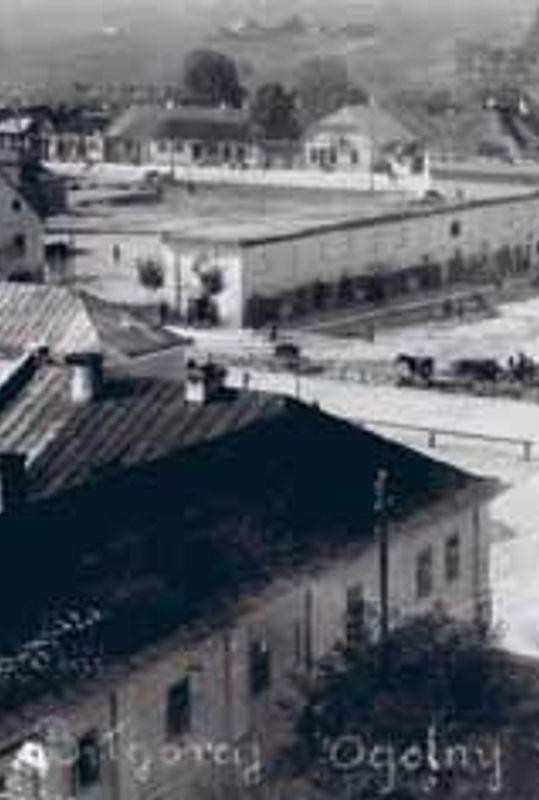Main Synagogue (defunct, at the intersection of Lubelskaya and Nadstawna Streets) - In 1616.Jews were granted a privilege to erect a synagogue, but it may have been built somewhat earlier. It was built at the southwest corner of the market, at the exit of the route to Krzeszow (later Nadstawna Street).It was probably destroyed by Khmelnytsky's Cossacks in the mid-17th century. With the restitution of the municipality at the end of the 17th century., the synagogue was rebuilt.Around 1728. A new synagogue was built in its place. The wooden building, square in plan and covered with shingles, was at the time the largest synagogue in the Zamosc region.On the west side, the prayer hall was preceded by a vestibule, above which was a babiniec. The synagogue, along with the beit ha-midrash and mikvah, were located in the synagogue square, near which was also the first Jewish cemetery.The synagogue was completely destroyed in a fire in 1867. In 1871. A project for a new synagogue was drawn up.In the fall of 1872. The building was almost finished, although finishing work continued until 1875.It had a rectangular plan. Adjoining the main hall on the west side was a vestibule, above which was a babiniec.On the east wall of the men's hall was a richly decorated aron ha-kodesh, preceded by a wrought-iron gate and steps. The synagogue was burned down in September 1939.No material trace of it remains.A residential house was built where it stood. In 2015. A stone obelisk was erected nearby with the inscription: "In this place there was a synagogue, a cheder, a mikvah and the first of Bilgoraj's three Jewish cemeteries. During the war they were desecrated and burned by the German occupiers."Holocaust - In September 1939. As a result of the arson of the city by the Germans, much of the Jewish quarter was destroyed. The city was occupied by the Germans, then by the Red Army.After the Germans re-entered Bilgoraj with the Red Army, about 20% of the Jews living in Bilgoraj - mostly young socialists and communists - fled to the east. In June 1940, the Germans created a ghetto in Bilgoraj, to which Jews from neighboring towns were also resettled.Since December 1941. The Jewish Self-Help Care Committee helped orphaned children, as well as destitute people deported from other localities. In April 1941. From the ghetto in Bilgoraj, the Germans relocated about 800 people to Goraj, while in April 1942. - Approx.220 deported to Tarnogrod.On August 8 of that year, approx. They deported 900 people from the Bilgoraj ghetto to the Belzec death camp. The liquidation of the ghetto began on November 2, 1942. Most of the Jews from Bilgoraj, along with those from Krzeszow, Jozefow Bilgorajski and Tarnogrod, were herded by the Germans to the railroad station in Zwierzyniec, from where they deported them two days later to the Belzec death camp. On November 4, the Germans murdered all the Jewish patients of the District Hospital in Bilgoraj.In the following months, they shot about a dozen Jewish patients at the cemetery in Piaski (now on Konopnicka Street). 300 Jews who were hiding in the city and its environs.The ghetto was finally liquidated in January 1943.The last Jewish workers with their families were then murdered. During the war, the Germans burned down Bilgoraj's synagogue and other community facilities, and devastated local cemeteries.
2. Biłgoraj - Synagoga Główna (nieistniejąca, u zbiegu ulic Lubelskiej i Nadstawnej)
Stories
Bilgoraj - Main Synagogue (non-existent, at the intersection of Lubelska and Nadstawna Streets)
Jewish History Tours

Powered by Clio Muse Tours
Powered by Clio Muse Tours
